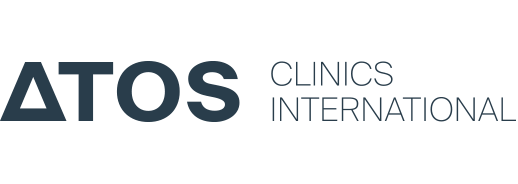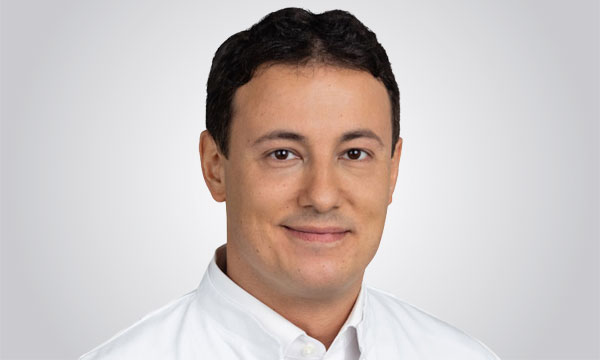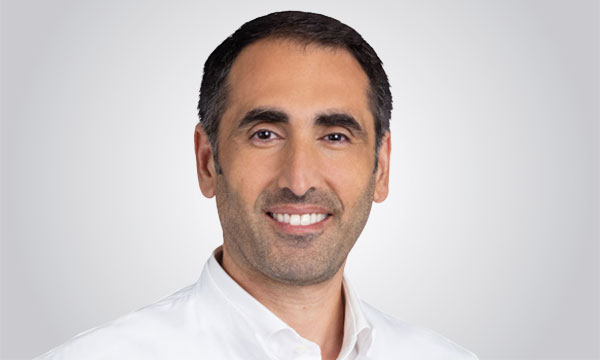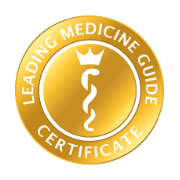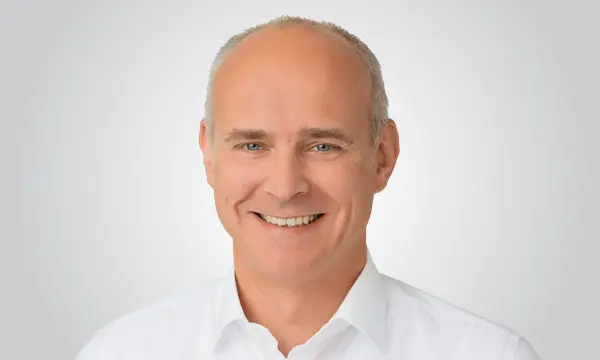Intervertebral discs serve as a buffer between the vertebral bodies and function to cushion shocks. The interior is a soft and elastic gelatinous core, which is stabilised by a hard fibre core. If the fibre core gets cracked and the gelatinous core loses elasticity – both happens with advancing age – the danger of a herniated disc increases. This occurs when the gelatinous core slips due to excessive load and presses on the fibre core or breaks it.
Definition
By far the most common is a disc herniation (also called herniation or disc prolapse) occurring in the area of the lumbar spine (lumbar spine), because it carries a large load from our body. In far fewer cases, the cervical spine is affected. Not only is age a contributing factor for a herniated disc of the cervical or lumbar spine, but obesity, predisposition, and improper loading, for example, by standing too long or sitting or by incorrectly lifting heavy loads are also factors. Disc herniation can therefore also occur in younger people.
The causes of a herniated disc in the area of the lumbar spine are manifold and can also be genetically influenced. Often, the discs are damaged long before a herniated disc, and fluid loss and height reduction largely occur unnoticed. In many cases, abrupt twisting or flexing movements are the trigger for a fibre ring tear, which is exacerbated by risk factors such as work-related posture, as well as obesity, weak back muscles, or activities requiring a lot of sitting. Occasionally, a herniated disc occurs during pregnancy.
Symptoms – Herniated disc in the lumbar spine
Typically, there is severe pain in the affected area, which can radiate into the legs and usually disappears after some time. This pain occurs when an intervertebral disc is torn or damaged by overstressing. The deformed outer ring of the disc then presses on the spinal nerves, causing the pain. As all movement, coughing and sneezing intensify the pain, patients often experience cramped posture. The back muscles are reflexively hardened and blocked. Alarm signals include numbness or tingling, reduced reflexes, a sudden buckling of a leg, paralysis or unusual cold or heat sensations in the legs. The pain is often not precisely localised and affected patients indicated areas extending over 4-5 vertebrae. Most people complain of pain that extends into the buttocks, the leg or even into a foot, i.e. “lumbago”. Patients often cannot stand or walk on their heels or toes.
Diagnosis – Herniated disc in the lumbar spine
Our specialists first make a clinical report with special attention to the above signs of neurological impairment. For further proof, X-ray diagnostics, for example to exclude spinal gliding, is necessary. Subsequently, a magnetic resonance tomography (MRI) is indicated. This x-ray-free diagnosis makes it possible to detect a herniated disc with certainty. If necessary, additional neurological examinations may be required to assess the nerve conduction velocity of the affected segment.
Conservative treatment – Herniated disc in the lumbar spine
ATOS Clinics offer the entire spectrum of common conservative treatment measures for a lumbar disc herniation. This ranges from facet joint treatment using cryo -, heat or laser therapy of the vertebral joints to nerve root treatment under 3D X-ray. ATOS Clinics have state-of-the-art technical equipment for all of these treatments. In the acute phase, anti-inflammatory and often centrally effective pain medications are needed. Positioning measures (step bed), physiotherapy, manual therapy and local heat can relieve pain. Many patients benefit from these measures. The symptoms recede under treatment in eight to twelve weeks.
Surgical treatment – Herniated disc in the lumbar spine
If the muscles characteristically affected by the disc herniation can no longer be moved against gravity (strength degree 3 of 5 or less), there is an indication for surgery. Depending on the dynamics of the loss of strength of the muscle, it may even be an emergency situation that requires swift intervention. The same applies to the sudden occurrence of disorders in bladder and rectal control.
Herniated discs are operated on in a minimally invasive way using a microscope. Today, in contrast to earlier techniques, only the prolapsed material of the disc is removed. This is intended to preserve as much disc tissue as possible, which has an important shock absorbing function. The operation is performed prone with a small, approximately 3 cm long skin incision. Access to the spinal canal takes place between the vertebral arches while preserving the stability of the small vertebral joints. The spinal cord canal is then mobilised from the herniated disc and the prolapse recovered with micro-instruments. After surgery, the patient can immediately get up and walk around.
Rehabilitation – Time and methodology
Since 90% of herniated discs do not require surgery, the ultimate goal of rehabilitation is to eliminate pain and neurological discomfort. Rehabilitation is performed on an outpatient, semi-inpatient or inpatient basis. This depends on the severity of the symptoms. The drugs of choice in the treatments are:
- Exercise therapy (stretching, strength, endurance)
- Pain therapy with drugs or oral anesthesia (injection)
- Psychological pain therapy for the decoupling of bad postures
- Relaxation therapies
- Back training for prevention
- Occupational therapy
- Nutritional advice to reduce body weight
- Apparative procedures (heat, electrical, ultrasound applications)
Normally, good results are achieved in 3-4 weeks.
If the related issues continue to be severe after 6-8 weeks (pain and dysfunction and, despite rehabilitation, there is no satisfactory improvement, surgery may be necessary. The rehab after an operation depends on the severity of the procedure. Experience shows that the patient should relax for the first 4-6 weeks after discharge. Only a moderate strain on the spine is recommended during this time. A rehabilitation programme with a specialist should only be started after this period.
